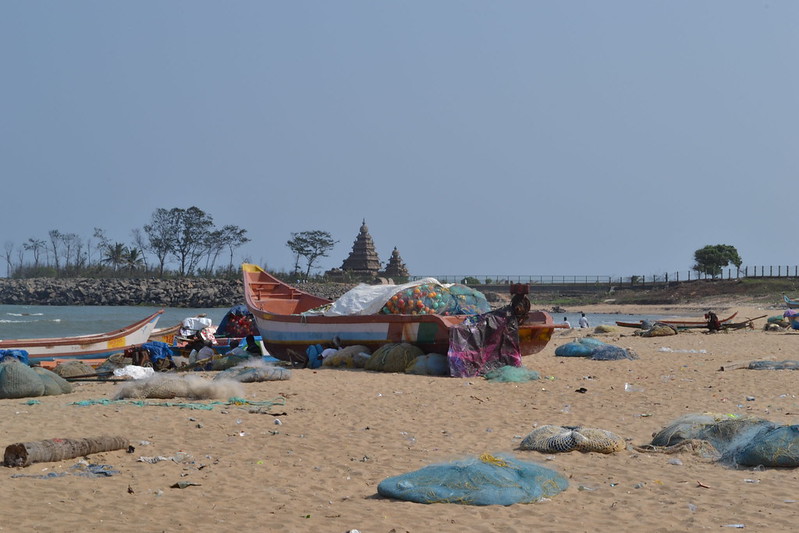Olympic medals produced from recycled precious metals found in mobile phones, podiums made from used ocean bottles and torchbearer uniforms made from plastic bottles — these are just a few of the sustainability initiatives you can expect at the 2020 Tokyo Olympics.
But, looking beyond the gimmicks to the everyday realities – Japan is a country where the issue of waste (particularly of the plastic kind) refuses to be ignored. In fact, they have so much of it, you can walk around on top of it; in the 1920s, they began creating whole artificial islands out of landfill. One of those islands, Yumenoshima Park, is even set to host the Olympic archery event. As the country with the second-largest per capita consumption of plastic waste in the world, coupled with limited landmass, rapid industrialisation and a high population density, Japan has long been challenged to come up with innovative ways to deal with all that it throws away.
Officially, Japan recycles 84% of its plastic waste. Sounds great, right? Well, although some parts of Japan certainly do put a lot of energy into sorting recyclables, the majority of this plastic waste (an estimated 60% of it) goes through “thermal recycling”, aka incineration, sometimes with energy as a byproduct. Japan currently has more than 1000 incinerators, around 380 of which are waste-to-energy plants, meaning they turn waste into power.
It could be argued today that incineration doesn’t always equal bad. If done properly – meaning using modern “environmentally-friendly” incinerator technologies and ultra-high temperature furnaces – harmful byproducts such as dioxins do not form and filters can prevent pollutants from being released into the air. Moreover, of course, energy can be produced. However, the burning process still produces fumes that contribute to climate change, and the electricity generated by waste incineration has been shown to have significantly higher greenhouse emissions than electricity generated through conventional means, such as fossil gas. Not to mention the fact that Japan’s reliance on burning its waste handily removes the problem from sight and artificially boosts its recycling rates, rather than tackling the underlying causes of the problem.
Southeast Asian and other island nations are now looking to adopt Japan’s waste management technologies, including waste-to-electricity incineration plants, because they are overwhelmed with waste, not only of their own making, but also imported waste from other countries. Ever since China’s “National Sword” policy came into force in January 2018, banning the import of many plastics and other materials, other countries in Southeast Asia have borne the brunt of the re-directed waste, including Vietnam and Malaysia. According to Greenpeace, plastic waste imports to Malaysia increased from 168,500 tonnes in 2016 to 456,000 tonnes in the first half of 2018, mainly coming from the UK, Germany, Spain, France Australia and the US.
Waste-to-power plants have already been introduced on a trial basis in countries such as Singapore and Thailand and there are 10 or so across the 10 member states of the Association of Southeast Asian Nations. Japan is geared up to capitalise on its expertise in the field, recently setting aside millions of dollars in its 2019 fiscal budget for developing proposals and bidding on waste management deals in Southeast Asia.
How Sustainable Can Burning Waste Ever Really Be?
The business of waste management is only set to grow in the future. The worldwide market for waste-to-energy incineration plants could be worth 80 billion USD by 2022, according to some estimates. However, there are dangers if incineration waste-to-energy plants develop too quickly — for example, if the waste isn’t sorted correctly and includes too much organic material, high enough temperatures will not be reached, leading to the formation of harmful toxins. This has already led some local communities and civil society groups to protest over pollution and health concerns of planned waste-to-energy projects in the region.
We know there is a huge global plastic pollution problem, but is incineration really a sustainable solution for those countries dealing with tonnes of plastic waste, including that from the West? Well-managed incineration plants can seem like a practical solution for countries facing an ever-increasing waste problem, but poorly-managed or quickly put together plants will create even more environmental problems.
What we need is to do is to look to cut back drastically on waste production (particularly plastic waste) worldwide – most importantly calling upon governments and corporations to use their power to reduce waste at the source. While this March the European parliament passed legislation to ban single-use plastics by 2021, Japan hasn’t shown as much incentive. Neither Japan nor the US signed the G-7 plastics charter last year, which would have committed the country to recycling and reusing at least 55% of plastic packaging by 2030 and recovering 100% of all plastics by 2040. Instead, the government has committed itself to a less ambitious 25% reduction in single-use plastic by 2030. Japanese consumers currently use around 30 billion plastic shopping bags a year. Last year, even Japan’s own environment minister declared that the country needs to move to other forms of recycling besides so-called ‘heat recovery’ (aka incineration) and expressed concerns about the growing volume of plastic being burned.






